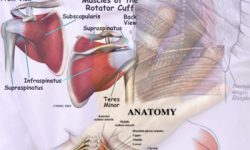An Overview of Trouble Breathing – Causes, Symptoms, Signs and Treatment
Trouble Breathing
The normal breathing process involves breathing in and forcing air out of the lungs. So, any minor disturbance anywhere in the respiratory system obstructing the normal breathing process results in trouble breathing. A person with moderate trouble breathing can be easily recognized by the way he/she keeps his mouth open while inhaling and exhaling. Few breathing difficulties may develop all of a sudden and disappear within a short period such as those in asthma. On the other hand there are chronic breathing difficulties requiring immediate and long term medical assistance. They might be even life threatening breathing difficulties.

Here is an article that explains the causes, symptoms and signs of breathing trouble.
Causes for Trouble Breathing
Breathing problems may develop due to a variety of reasons which include
- Diseases such as asthma, bronchitis and lung tumor in which the air passages become partially or completely narrow.
- Muscular or neurological disorders such as diaphragmatic paralysis and myasthenia gravis.
- Poor elasticity of lung muscles.
- Inflammation of the lungs due to pneumonia.
- Injury to the chest cavity or fracture of the ribs.
- Fluid accumulation around or within the lungs as in pleuritis and congestive heart failure.
- Pain in the chest muscle due to heart attack and inflammation of heart muscles.
- Inflammation of the lungs and airways due to infections such as bronchitis and tracheitis.
- Acid reflux that stimulates certain nerve fibers which results in constriction of air passage muscles also results in trouble breathing. Sometimes the gastric contents enter the air passage and causes inflammation and swelling of the air passage.
- Anxiety and stress also results in faster breathing.
- Allergens stimulate the secretion of histamine that causes swelling of air passages. Allergens also increase mucus secretion which obstructs the air passage.
- Panic attacks and night terrors also cause difficulty in breathing.
- Few women suffer with breathing difficulty in the last term of pregnancy as the enlarged uterus reduces space for contraction of diaphragm and expansion of the lungs.
- Extensive workouts can also result in breathing difficulty in few people.
The Signs and Symptoms of Trouble Breathing
In medical terms the difficulty to breath is termed as dyspnea. List of signs and symptoms of breathing problem include

Dry nostrils that appear flared.
- Dry nostrils that appear flared.
- Headache with trouble breathing is a sign for sinusitis. Other breathing problems are also characterized by headache.
- Chest cavity expands greatly in an attempt to accumulate the required amount of oxygen.
- Increased breathing rate so as to meet the oxygen demands. Medically faster breathing is termed as tachypnea.
- Either dry or wet cough may accompany with breathing problems. This happens especially when the breathing problem arises due to choking. The body tries eliminating the foreign object or the allergen by coughing.
- Moderate to severe trouble breathing manifests as change in skin color that starts with reddening of the face which progresses to pale discoloration and finally a blue tinge.
- Unusual breathing sounds such as wheezing, gasping, stridor and grunting. Stridor is the abnormal sound produced while breathing due to blocking of the throat. Crackling sound made in the lower air passages of the lungs may be seen in conditions of pulmonary edema and bronchitis.
- The person may have nausea or vomiting sensation. Pressure that exerts on the lungs in an attempt to draw in more air may cause them to throw up. This sometimes helps to clear the block obstructing the nasal passage and relieves the breathing problem.
- Dizziness due to poor oxygen supply in the body and thus the brain.
- Chest pain due to the pressure exerted on lungs due to poor air supply.
- Excessive sweating.
- Nose blockage is observed in cases of breathing problems due to sinusitis, cold and cough.
A person showing any of the above symptoms should be treated immediately by diagnosing the cause for poor respiration. If the person turns bluish then he should be immediately given an oxygen treatment to prevent death.
Diagnosis of Breathing Problems
Inquiring about the patient history and his/her family history along with physical examination helps in primary diagnosis of the cause for trouble breathing. For further diagnosis of the actual problem pulmonary function tests or the lung function tests are used. Spirometry is the common test that is used to assess the breathing ability of asthma people. This test estimates the amount of air and the speed with which a person can blow air out of his lungs.
In cases of fluid accumulation or damage to the chest cavity the physician may recommend for a chest X-ray. In more complicated cases a CT scan is done to get a complete and clear image of the lungs and the entire respiratory system.
If the doctor suspects of any cardiac problem then he may take an Electro-cardiogram to assess the functioning of heart.
Treatment for Trouble Breathing
- Once the problem is diagnosed treatment should be started immediately to avoid complications. Maintaining an active life style and regular practice of simple breathing exercises is recommended to keep breathing problems under control.
- Asthma patients are recommended to keep the inhalers handy to prevent breathing complications. Bronchodilators may be used to keep wheezing under control.
- Stress levels should be reduced to keep breathing under control. If you are stressed out just close your eyes and think of a beautiful picture or a person you love the most. This will automatically bring down the stress levels and regulates breathing.
- Antibiotics should be used to treat infections such as pneumonia.
- In critical conditions if immediate medical care cannot be provided mechanical ventilation should be used to save the life.
- Lastly, it is highly recommended to follow preventive measure such as staying away from allergens to prevent repetition of trouble breathing.
Newsletter
Get our Tips and Tricks to your Inbox



